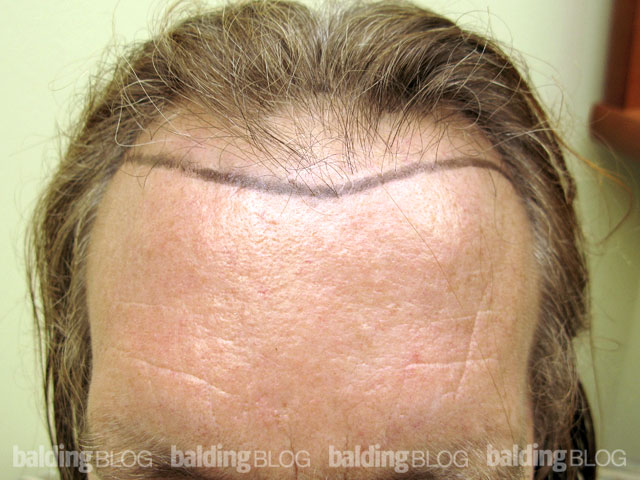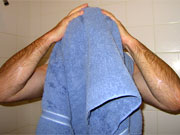This is in reference to this response.
You mentioned needing to see the eyebrows and forehead lifted by an individual to see where exactly to construct a hairline. I read a lot of doctors ask the patient to lift their forehead to help construct a hairline as well. My understanding was it showed the extent to where the muscles of the forehead ended which would basically indicate the lowest possible position of one’s hairline. Anyhow, regardless if I was correct or wrong in my understanding, what about individuals such as myself who cannot move or lift their forehead through use of the muscles located there? I was told by my doctor that these muscles were “underdeveloped” or weak and I have never been one either to voluntarily or involuntarily move my forehead in which to show creases or wrinkles. How would a doctor determine where a proper hairline should be located in my case and others? Thank you!

We do not base a hairline on forehead muscle per se, but it does give a generalized reference point. It does not matter if you cannot lift your forehead to delineate a muscle. An anatomically correct hairline is made with the general proportions of a person’s face using the rule of thirds the way artists draw a face. Alternatives that we use are in equalizing the chin to nose distance with the distance from the glabella (groove between the eyes above the nose) and a similar distance upward.
Hairline position is not an exact science — it is an artistic design based on proportions and knowledge of human anatomy and form, and takes into account what the patient believes fits his facial proportions. We often find that this process becomes a negotiation to arrive at the ideal location.




 You’d have to take measurements and compare them over time to see if the hairline is receding, but having an asymmetrical hairline isn’t unusual and doesn’t necessarily mean you’re losing your hair.
You’d have to take measurements and compare them over time to see if the hairline is receding, but having an asymmetrical hairline isn’t unusual and doesn’t necessarily mean you’re losing your hair. I looked at the photo of Ian Watkins, but it’s difficult to tell from one angle like that. I then used Google to try to find more photos, but all of the ones I see have his hair longer and covering the hairline. So truth be told, from the photo you sent it looks like a typical mature hairline, but I really don’t know for sure. I doubt he’s got any balding beyond that. He’s got good hair.
I looked at the photo of Ian Watkins, but it’s difficult to tell from one angle like that. I then used Google to try to find more photos, but all of the ones I see have his hair longer and covering the hairline. So truth be told, from the photo you sent it looks like a typical mature hairline, but I really don’t know for sure. I doubt he’s got any balding beyond that. He’s got good hair. Read the full article:
Read the full article:  Hello Dr Rassman, just a quick one here. Does Taylor Lautner look to be displaying the signs of early MPB, or is he simply sporting a mature hairline? What Norwood class do you think he would he be?
Hello Dr Rassman, just a quick one here. Does Taylor Lautner look to be displaying the signs of early MPB, or is he simply sporting a mature hairline? What Norwood class do you think he would he be?  Vellus hairs are short, fine, light colored, often barely noticed hairs, which develop on most of the human body… and on the scalp they are part of the follicular unit. Some people might call it peach fuzz, and these hairs are not only on your frontal or
Vellus hairs are short, fine, light colored, often barely noticed hairs, which develop on most of the human body… and on the scalp they are part of the follicular unit. Some people might call it peach fuzz, and these hairs are not only on your frontal or 